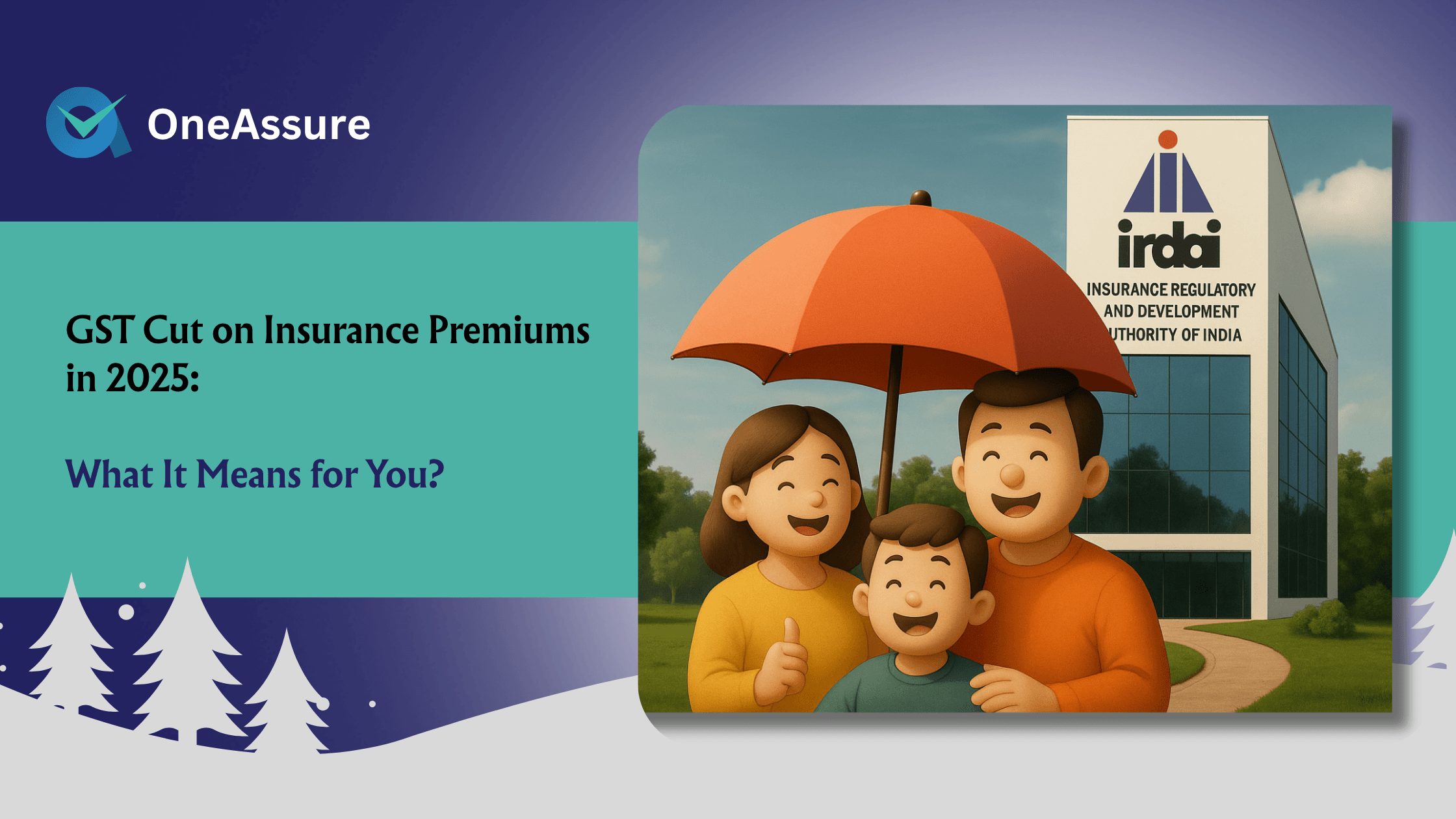Home
Insurance
Insurance Updates
Gst Cuts On Insurance Premiums In 2025 Will It Make Insurance Truly Affordable For Indians
GST Cuts on Insurance Premiums in 2025: Will It Make Insurance Truly Affordable for Indians?
Explore the upcoming GST reduction on insurance premiums in India. Understand its impact on affordability, market dynamics, and the road to "Insurance for All by 2047."
Muhit Nayan
September 25, 2025

In 2025, the Indian insurance sector may finally get a long-awaited relief: a reduction in the Goods and Services Tax (GST) levied on insurance premiums. Currently, insurance products - whether life, health, or term - are taxed at a steep 18%, making them costlier for millions of Indians. However, the GST Council has recently been evaluating proposals to slash this rate, with two options on the table: reducing GST to 5% with input tax credit (ITC) or offering a full exemption on specific insurance products such as term plans and basic health covers up to ₹5 lakh for senior citizens. If implemented, this reform could significantly change the cost dynamics of insurance in the country.
The push for GST cuts comes at a time when affordability has become a serious concern. Over the last few years, insurance premiums - especially for health insurance - have surged due to rising medical inflation, higher claims, and an ageing population. For many middle-class and lower-income families, this has meant either compromising on coverage or opting out altogether. According to industry reports, the high GST rate alone adds around ₹1,800 to a ₹10,000 annual premium, making insurance seem like a luxury rather than a necessity. This additional burden deters first-time buyers and reduces long-term policy renewals.
India’s overall insurance penetration remains low at about 3.7% of GDP, far below the global average of around 7%. This is a worrying statistic for a nation targeting “Insurance for All by 2047,” a goal set by the Insurance Regulatory and Development Authority of India (IRDAI). For this vision to become a reality, financial inclusion cannot just be about creating new policies; it must also address cost barriers. A reduction in GST could serve as a catalyst, making insurance more accessible and improving uptake, particularly among underserved segments like senior citizens and rural populations.
However, not everyone is cheering for a full exemption. Several insurers have expressed concerns about losing input tax credits if GST is completely waived. These credits currently allow insurers to offset taxes paid on services such as distribution, IT infrastructure, and administration. Without them, operational costs could rise, prompting insurers to hike base premiums to protect their margins. As a result, some insurers have advocated for a reduced rate of 12% instead of a full exemption, which they believe would strike a balance between affordability for consumers and financial viability for providers.
If the GST Council agrees to a 5% rate with ITC, consumers could see direct and substantial savings. A ₹25,000 annual health insurance policy, for example, would attract only ₹1,250 in GST instead of ₹4,500 - saving ₹3,250 per year. Over a policy term of 10 years, that’s ₹32,500 back in the customer’s pocket. This benefit becomes even more pronounced for large family floater plans or long-term life insurance contracts. And since GST is paid on every renewal, the impact compounds over time, improving the affordability and sustainability of long-term coverage.
Beyond personal savings, a GST cut could have a broader market impact. It may encourage insurers to redesign products to focus on value-driven pricing, streamline benefits to meet the needs of a more price-sensitive population, and increase digital distribution to reach untapped markets. Insurtechs and digital brokers, who are already working to simplify access and education, may find it easier to pitch insurance products to Gen Z and millennial customers once premiums drop. The market could also see a spike in short-term personal accident and hospitalization plans, which are typically most impacted by tax loadings.
The upcoming GST Council meeting, expected in July - August 2025, will be critical. Sources indicate that a decision may be reached soon, with implementation by late 2025 or early 2026. While a full exemption for certain segments such as term life and health covers under ₹5 lakh may be introduced first, the sector anticipates a phased rollout of broader reforms. Either way, the direction is clear: the government recognizes that insurance cannot remain a heavily taxed product if it’s to serve as a basic social safety net.
For Indian policyholders, this is a moment worth watching. Whether you're a salaried professional trying to secure your family's future, a senior citizen managing post-retirement health costs, or a first-time buyer exploring coverage options, a GST rate cut could make a real difference. It may finally bring insurance within reach of millions who are currently uninsured, not because they don’t understand its value, but because they simply can’t afford it.
In conclusion, the proposed GST cut is more than just a tax tweak. It's a potential turning point in India’s journey toward universal financial protection. If implemented wisely, it can bridge the gap between policy intent and policy action, helping insurance evolve from a financial product into a fundamental right.


Talk to an OneAssure Insurance Expert
Get the best policy with proper guidance
Get on a Call Now.
Related Articles
 Insurance Updates
Insurance UpdatesGovernment Considers Lower GST on Insurance Premiums to Boost Affordability and Coverage
 Health Insurance Guides
Health Insurance GuidesUnderstand GST on health insurance, why it’s charged, and how it affects the total cost of your health policy and tax-saving claims.

